“All paid jobs absorb and degrade the mind.” -Aristotle
“Most artists work all the time, they do actually, especially good artists, they work all the time, what else is there to do? I mean you do.” -David Hockney
There is a scene in Woody Allen’s classic movie Annie Hall in which children announce to the viewer not what they aspire to become when they grow up, but what they actually become in their adult lives. One boy is the proud president of the Pinkus Plumbing Company. Another sells tallises. The third boy says, “I used to be a heroin addict. Now I’m a methadone addict.” From the mouth of babes Allen voices the truism that sometimes there’s a gap between what we want to do and what we end up doing.
Many of us, this writer included, have confronted this gap. Not once as a child did I dreamily gaze into the future and say, “When I grow up, I want to be an administrative assistant.” Actually I knew from a very young age that I wanted to become an artist. I am. But I also have a full-time job.
Between my full-time job and full-time studio practice, I work hard—very hard. I’m not alone. Indeed, the will to work must mutate from an academic obligation into herculean determination in young artists out on their own. Without a maniacal, insistent drive to create you will surely drown in the sea of other aspiring artists around you. Feeling adrift after a full day of filing and faxing at my day job, I headed to Greenpoint a few weeks ago for a rousing evening with two of the most ambitious young artists I know: Jennifer Catron and Paul Outlaw.
Chances are you have met Jen and Paul. If you haven’t, you will. They will make sure of this. I was first introduced to Jen and Paul at Cranbrook Academy of Art, where they began in the sculpture department and left together as a performance artist ensemble. Since they graduated from Cranbrook in 2010, Jen and Paul have been busy. In slightly less than two years, they have operated their own Fish Fry truck, been featured at Scope New York, hosted a series of apocalypse-themed dinner parties/performances at the Lower East Side Gallery, Allegra LaViola, and performed at Mass MoCA. Later this month, the pair will participate in the show “No Object is an Island” at the re-opening of the Cranbrook Museum of Art.
A curious (but by no means unexpected) development since Cranbrook is the appearance of Paul’s rattail, which commenced, fittingly, at our graduate commencement. Symbolically, Paul’s hair tassel tracks his growth since grad school. Inside their basement studio the rat tail is at home with its feral surroundings; the tanned hide of a cow carcass is folded in a corner next to a stack of oversized gambling chips. Remarkably, Outlaw is Paul’s real last name; he looks and acts the part.
Likewise Jen is a maverick in her own right. Whereas Paul prefers sleeveless undershirts, Miss Catron has branded her own combination of quirk and elegance. On the evening we met, Jen was stylishly dressed in the color of the season, camel. Her get-up—part cowgirl, part seventies power suit— was evidently hand-made, as are all her clothes. The charming concoction was offset by her vibrant red hair. With her brilliant mane, her theatrical outfits, her alien energy—Jen could generally be described as high-octane.
Jen and Paul are distinct in my circle of friends not only in appearance but because they are making waves in the larger pool of talented emerging artists in New York. A worthy goal for recent grads is to find a way to fund your artistic production. The more taxing challenge is to get paid for your artistic production. Admirably, how Jen and Paul make money and how they make art are not always unrelated. Like me, they also have day jobs.
For Jen and Paul, art is the foundation upon which everything else in their lives builds. As Jackie Battenfield, an artist who teaches classes at Columbia University on professional development relayed to me, it is essential to “create a schedule that fits with your creative energies so you are regularly engaged in making art” (see below for more). In all ways Jen and Paul have carefully structured their lives to be able to create art as much as possible, like one endless performance.
Officially Paul and Jen work as a set builder and tutor for an autistic teenager, respectfully. Unofficially they attend innumerable art openings (mostly not to look at the art), memorize the names and the faces of New York’s art world titans, cruise in their van in the middle of night begging doormen to deliver hand-made invitations to their art events, and research the logistics for specific projects such as how to make a dinner table levitate. During waking hours, they are either at work or working.
Sipping on a tall boy of Miller High Life and chatting about hip hop, it occurred to me that similar to the glittery rap stars they idolize, my hosts operate like the excitable entrepreneurs of their own exceptional enterprise. A recent study by the National Endowment for the Arts confirms the entrepreneurial spirit of American artists, who are three and a half times more likely than the general public to be self-employed. In like stride, Jen and Paul have long abandoned the romantic stereotype of the solitary studio artist, in favor of emphasizing and developing the social and practical aspects of their careers in the arts. They’re hustlers.

Jen and Paul from their forthcoming performance at the Cranbrook Museum of Art. Image courtesy the artists.
As with any new venture, confidence is key. For example, Jen had no prior experience working with children with autism. She explained that before her, people with more experience and degrees in education had unsuccessfully held her position. Her employers discovered that unlike others, Jen extended the role beyond that of a tutor into a mentor. It is not difficult for me to imagine that the same fire that trumpets Jen’s presence in a crowd might also lend itself to the inextinguishable patience and effort her job requires. Moreover, Jen told me that one aspect of her job is teaching someone who has trouble relating with his environment “how to be involved and how to interact with the world.” To reduce the objective of the arts to the most rudimentary level, this is the exact domain of artists. As artists, we interact and make sense of the complex world around us for other people. In this sense Jen has found a way to make an art out of her job.
Paul has often worked with art in a more literal way. His “natural talent” (Jen’s words) for working with his hands were confirmed by his silver medal in the 2010 Art Handling Olympics. Not only is Paul a laudable art handler, he has also worked for other artists, describing his employment as an assistant to the artist Tony Matelli as “invaluable.” Like Jen, Paul’s inexperience in the field did not hold him back. On a whim Paul asked for a job in New York when Matelli visited Paul’s undergraduate institution, the University of Alabama at Tuscaloosa. Matelli agreed. So Paul took a plane to New York City with precisely one “bag of shit and enough money for one week.” Countless odd jobs and eight long years later, Paul himself is now a visiting artist at universities and colleges.
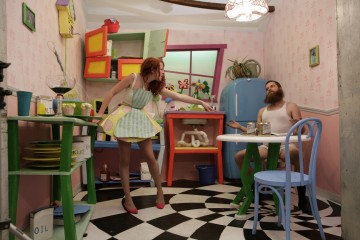
From "The Honeymooners" performance at Grizzly Grizzly Contemporary Art Space, Philadelphia, PA. Image courtesy the artists.
Paul says, “What you get out of grad school is not what you think you are going to get.” In other words, if you believe the letters “MFA” spell “job,” you might be mistaken. You might even be going to grad school for the wrong reasons. It is the luckiest lot of people who discover their life’s love; often it seems that only the slimmest margin of this cadre can harness their passion and distill it into profit. However daunting, this fact does not invalidate our education or our contributions to society as artists.
Jen and Paul work hard, they work well and they know it. They make money to make art; they work to make work. Money comes, money goes, but these two young hustlers are here to stay.
In closing, a few pointers
Jackie Battenfield, artist and author of the book The Artist’s Guide: How to Make a Living Doing What You Love (Da Capo Press, 2009) offers the following advice for emerging artists:
1. Find a day job or develop a freelance business that’s compatible with your studio practice. Create a schedule that fits with your creative energies so you are regularly engaged in making art.
2. Minimize your expenses. That may mean taking a thermos of coffee and a bag lunch everyday and eliminating takeout from your diet. The less you spend on these the more you have for your art.
3. Get to the studio and work, even if it’s a corner of your bedroom. Use the momentum your work developed in school to push it forward. It will require a lot of self-discipline to juggle a day job, create art, and manage expenses.
4. Stay connected to your peers; check out the nonprofit opportunities around you, as they are the most welcoming of spaces. Organize events with other emerging artists and invite everyone to come.
5. Look around you. The art business has many job possibilities, although most are not well paid. Working a few years in an art gallery, museum, or nonprofit, for an art mover, or as an artist’s assistant can provide a paycheck and valuable insight into the profession.

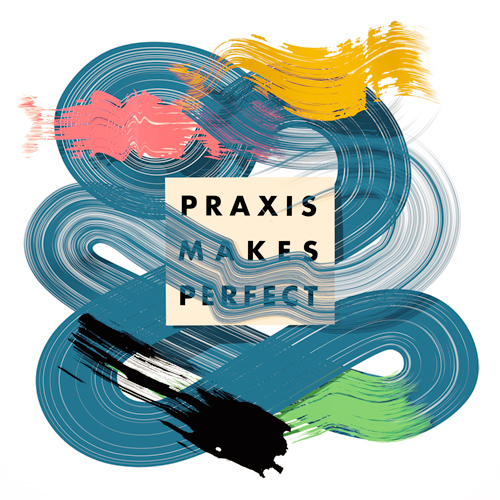
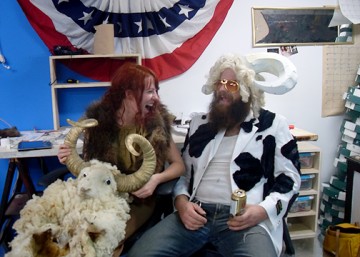

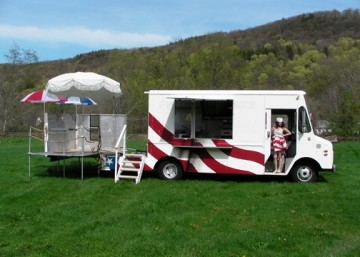
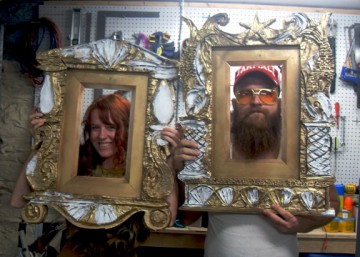



Pingback: The clean crisp contemporary now « Hargie